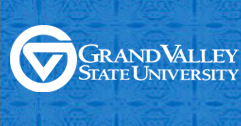LGBTQ+ Inclusivity and Sex Positivity in Rural School-Based Sexuality Education
Location
Hager-Lubbers Exhibition Hall
Description
PURPOSE: Existing literature within the discipline confirms that sexuality education is associated with sexual health outcomes; specifically, developmentally appropriate, accurate, comprehensive sexuality education helps adolescents reduce and avoid risky sexual behaviors. Without comprehensive LGBTQ+- inclusive education, heteronormativity and gender-binarism biases create educational gaps, thus leading to disparities in sexual health outcomes for lesbian, gay, bisexual, transgender, and questioning adolescents. METHODS: A content analysis for LGBTQ+-inclusive and sex-positive content within school-based sexuality education curricula allows for data-driven recommendations to be made and educational gaps to be quantified. Within the rural 10-county jurisdiction of District Health Department #10, thirty high schools (providing sexuality education during the 2017-2018 academic year) were contacted via email, requesting the school’s sexuality education curriculum and teaching materials. The proposed coding system was generated based on existing curricula/literature. ANALYSES: Using Google Sheets, all materials were analyzed for specific code descriptions under the following categories: contraception, types of sex, STD/HIV education, healthy relationships and communication, sexual identity, society and culture, consensual sex/sexual rights, and sex as a source of pleasure. RESULTS: Eight of thirty schools submitted materials for analysis within the study window. Results show that zero of eight schools cover 100% the defined categories, suggesting that the sexuality education curriculum of each school studied contains underrepresented areas in LGBTQ+ inclusivity and sex positivity. CONCLUSION: With data generated in this study, schools can work to address specific areas in effort to reduce bias and provide inclusive and affirming sexuality education to improve sexual health outcomes of at-risk LGBTQ+ youth.
LGBTQ+ Inclusivity and Sex Positivity in Rural School-Based Sexuality Education
Hager-Lubbers Exhibition Hall
PURPOSE: Existing literature within the discipline confirms that sexuality education is associated with sexual health outcomes; specifically, developmentally appropriate, accurate, comprehensive sexuality education helps adolescents reduce and avoid risky sexual behaviors. Without comprehensive LGBTQ+- inclusive education, heteronormativity and gender-binarism biases create educational gaps, thus leading to disparities in sexual health outcomes for lesbian, gay, bisexual, transgender, and questioning adolescents. METHODS: A content analysis for LGBTQ+-inclusive and sex-positive content within school-based sexuality education curricula allows for data-driven recommendations to be made and educational gaps to be quantified. Within the rural 10-county jurisdiction of District Health Department #10, thirty high schools (providing sexuality education during the 2017-2018 academic year) were contacted via email, requesting the school’s sexuality education curriculum and teaching materials. The proposed coding system was generated based on existing curricula/literature. ANALYSES: Using Google Sheets, all materials were analyzed for specific code descriptions under the following categories: contraception, types of sex, STD/HIV education, healthy relationships and communication, sexual identity, society and culture, consensual sex/sexual rights, and sex as a source of pleasure. RESULTS: Eight of thirty schools submitted materials for analysis within the study window. Results show that zero of eight schools cover 100% the defined categories, suggesting that the sexuality education curriculum of each school studied contains underrepresented areas in LGBTQ+ inclusivity and sex positivity. CONCLUSION: With data generated in this study, schools can work to address specific areas in effort to reduce bias and provide inclusive and affirming sexuality education to improve sexual health outcomes of at-risk LGBTQ+ youth.
